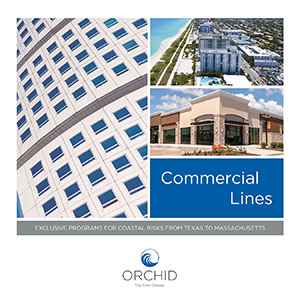Flood insurance coverage is a necessity in many parts of the country. Those who live in high-risk areas can now choose between the National Flood Insurance Program (NFIP), or a private flood insurance plan. It is important for homeowners and business owners to understand the advantages and disadvantages to both types of flood protection.
What is the National Flood Insurance Program?
NFIP underwrites most flood insurance coverage in the United States or more than 5 million homes based on Federal Emergency Management Agency (FEMA) figures. On average, an NFIP flood insurance policy costs around $700 per year. NFIP flood insurance depends on where a homeowner lives.
If you live in a National Flood Insurance Program–participating community, you can buy this coverage through one of the direct servicing agents who work for the program.
- Those who do not live in one of these communities can obtain flood insurance through one of the many Write Your Own (WYO) companies. WYO is a program that allows private insurance companies to administer NFIP flood insurance using their own company’s name and branding.
- There are two components of coverage for NFIP flood insurance. These include coverage for the building and coverage for its contents. Building coverage is limited to $250,000, while contents coverage is limited to $100,000.
With NFIP coverage, homeowners may purchase one type of coverage or both. However, your mortgage company may have requirements for the type of flood insurance you can purchase. For many years, homeowners who lived in high-risk areas and had a mortgage-backed by federal funds were required to buy NFIP plans. However, lenders are required to accept coverage from private insurance companies as well if the provider and their coverage meet specific criteria. For the policy to be enforced, it must provide enough protection to cover the value of the home. And the lender must document its decision about the sufficiency of the private insurance policy the homeowner prefers to take out.
What is Private Flood Insurance?
Private flood insurance is not as standard as NFIP. It only makes up a small percentage of the flood insurance market. But the number of homeowners who are considering private insurance instead of government-funded programs is beginning to rise. The National Association of Insurance Companies reports flood insurance premiums increased by as much as 71 percent from between 2016–2018.
There are several reasons why more people are turning to private flood insurance. For one, insurance companies no longer use flood insurance as an unattainable risk. The company models used for underwriting flood damage risks are improving. And those who oversee the creation of flood risk models now have more knowledge in terms of predicting floods. These advancements have raised interest in investments in insurance companies and, as a result, more firms are expanding and diversifying markets to include flood insurance.
Another reason for more interest in private flood insurance is that NFIP, as well as FEMA, are more than $20 billion in debt. That adds some uncertainty to this government-funded program and has caused insurance policymakers, as well as policyholders, to search for alternate coverages.
There are three types of private flood insurance available.
Standalone Policy
This private flood insurance offering features high coverage limits for homes and personal belongings.
Excess Flood Policy
This policy will supply added insurance coverage once NFIP coverage limits are met.
Flood Endorsement
This offers low coverage amounts and can be included in a homeowner’s insurance policy for an added premium.
What Are the Coverage Limits for Private Flood Insurance Policies Compared to NFIP?
Private flood insurance policies typically offer higher limits of coverage than NFIP. Here is an example of a private insurance policy’s maximum home and content coverage limits.
Private Insurance Policy
Maximum Home Coverage is at $2,000,000, and the Maximum Content Coverage limit is $500,00.
NFIP
Maximum Home Coverage is at $250,000, and the Maximum Content Coverage limit is at $100,000.
What is the Waiting Period for Private Flood Insurance Providers vs. NFIP?
Most private flood insurance companies have a waiting period of around 10 days. Also, most private flood insurance companies have no waiting period if the policy is bought to close a loan. NFIP has a 30-day waiting period.
What are the Pros and Cons of NFIP and Private Flood Insurance?
The Biggert-Waters Act legislated a wider variety of flood insurance options that keep costs down for homeowners. However, both NFIP plans and private flood insurance policies have benefits and disadvantages.
Homeowners who have an NFIP plan have $250,000 in coverage for rebuilding purposes, $100,000 for contents, and a deductible between $1,000 and $1,250. They will also have a reasonable premium of around $700 annually. NFIP cannot drop a homeowner from a policy in the same way a private insurance provider can if the home is too much of a risk to insure.
While that may be a downside, private flood insurance should not be ignored. As technology begins to improve flood forecasts, better, more accuracy could result in much lower rates.
Private flood insurance also has a much shorter waiting period of about 15 days. The waiting period is 30 days for an NFIP plan. Therefore, if you are a couple of weeks away from flood season, and still need to buy an insurance plan, private flood insurance is a possibility.
Private insurance plans offer higher coverage limits a more comprehensive protection than NFIP. Homeowners can have their personal items protected and receive a full replacement cost if lost or damaged. An NFIP plan will only supply reimbursement for the depreciated amount, or it may provide the actual cash value of flood-damaged items.
To learn more about offering NFIP and Private Flood insurance policies, contact our team at 1-866-370-6505. Our licensed professionals will be happy to answer any questions you have.




